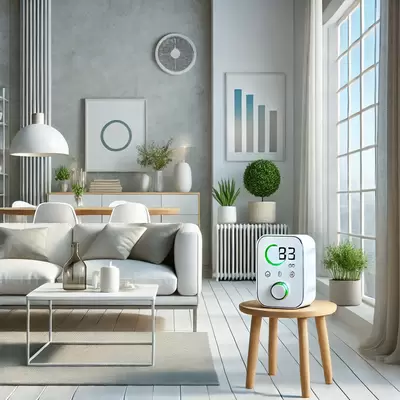
Maintaining a healthy indoor environment is crucial for your family’s well-being. Many homeowners focus on cleaning visible areas but often overlook the quality of the air they breathe every day. This is where air quality testing comes into play. It helps identify pollutants, allergens, and harmful substances in your home, ensuring a safe living space.
What is Air Quality Testing?
Air quality testing involves assessing the level of pollutants present in the indoor air. Experts use specialized equipment to detect various contaminants like dust, mold, carbon monoxide, volatile organic compounds (VOCs), and other allergens. This process provides a comprehensive analysis of indoor air, making it easier to identify problem areas and take corrective measures.
Signs That You Need Air Quality Testing
-
Increased Allergy Symptoms: If you or your family members frequently experience unexplained allergy symptoms such as sneezing, coughing, or itchy eyes, poor air quality could be the culprit.
-
Musty Odors: A persistent musty smell often indicates the presence of mold or mildew, which can significantly impact your health if left untreated.
-
Unexplained Fatigue or Dizziness: If you feel tired or dizzy when inside your home, it could be due to high levels of carbon monoxide or other harmful gases.
-
Visible Mold or Mildew: Seeing mold growth around windows, bathrooms, or the basement is a red flag that your indoor air might be contaminated.
-
High Humidity Levels: If you notice consistent high humidity, it’s a breeding ground for mold and dust mites, making air quality testing essential.
Benefits of Air Quality Testing
-
Identifies Hidden Pollutants: Air quality testing detects pollutants that are not visible to the naked eye, ensuring that hidden issues are addressed promptly.
-
Improves Health and Well-being: By eliminating allergens and harmful particles, you reduce the risk of respiratory illnesses, headaches, and long-term health issues.
-
Increases HVAC Efficiency: Cleaner air reduces the strain on your HVAC system, leading to lower energy costs and prolonged system lifespan.
-
Peace of Mind: Knowing that your home is free from dangerous contaminants allows you to breathe easier—literally and figuratively.
The Process of Professional Air Quality Testing
Professional air quality testing is a detailed process that involves several steps to ensure a thorough evaluation:
-
Initial Assessment: Experts begin by discussing any symptoms or issues you’re facing to understand the potential problem areas.
-
Air Sample Collection: Samples are collected from different rooms to get an accurate reading of the pollutants in your home.
-
Laboratory Analysis: The samples are sent to a certified laboratory for detailed analysis, identifying any harmful particles present.
-
Reporting and Recommendations: After analysis, a comprehensive report is provided, outlining the findings and recommended actions to improve air quality.
How Often Should You Test Your Air Quality?
While there’s no one-size-fits-all answer, it’s recommended to test your indoor air quality at least once a year. However, if you have pets, suffer from allergies, or notice any of the signs mentioned earlier, more frequent testing may be necessary.
DIY vs. Professional Air Quality Testing
DIY air quality testing kits are available, but they often lack the accuracy and comprehensiveness of professional testing. Certified professionals use advanced equipment and follow industry standards to ensure accurate results, making professional testing the preferred choice for reliable data and recommendations.
Conclusion
Air quality testing is a proactive step toward maintaining a safe and healthy home environment. By identifying and addressing indoor air pollutants, you create a space where your family can breathe clean, fresh air every day. Don’t wait for symptoms to arise—schedule an air quality test today to ensure a healthier tomorrow.




